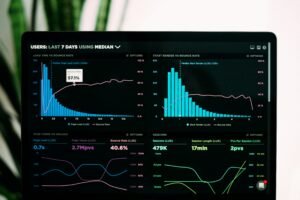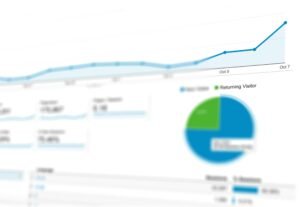Optimizing PPC Customer Acquisition Costs for B2B: Strategies and Insights
As businesses in the United States continue to navigate the competitive landscape of digital marketing, optimizing customer acquisition costs (CAC) for pay-per-click (PPC) campaigns in the B2B sector has emerged as a critical priority. Insights from Search Engine Land, a prominent resource on SEO, PPC, and platform optimization, highlight effective strategies to enhance CAC for B2B businesses.
Understanding the Fundamentals: CAC and Lifetime Value
At the heart of optimizing PPC campaigns lies the understanding of customer acquisition cost (CAC), a metric calculated by dividing the total cost of marketing by the number of customers acquired. This figure becomes even more pertinent when considering a customer’s lifetime value (LTV), which influences budgeting decisions for customer acquisition efforts.
Melissa Mackey’s article on Search Engine Land underscores the importance of setting an ideal CAC that aligns with the LTV. For businesses yet to establish these benchmarks, this understanding is crucial before diving into PPC advertising.
“Harmonizing CAC and LTV requires strategic foresight, especially in the B2B space where the sales cycle can be lengthy and multifaceted,” says digital marketing consultant Taylor Hughes. “It’s not about minimizing cost per conversion but about maximizing customer lifetime value to ensure sustainable growth.”
Leveraging Offline Conversion Imports for Accurate Measurement
A significant insight from the piece is the realization that B2B sales cycles, often involving multiple touchpoints over a span of 12–18 months, render traditional cost-per-conversion metrics insufficient. Offline conversion imports, facilitated by CRM platforms like Salesforce and HubSpot integrated with Google Ads, serve as powerful tools to gain visibility into the various stages of the sales funnel.
In an illustrative example, integrating HubSpot with Google Ads provided a client detailed insights into funnel stages, ultimately determining the cost per customer as $2,394.46. This metric offered a definitive target for campaign optimization efforts.
“Integrating offline conversions bridges the gap between online marketing metrics and real-world sales outcomes, which is crucial for effective decision-making in B2B marketing,” explains Laura Mitchell, a local PPC analyst.
Implementing Smart Bidding Strategies
Smart Bidding, an AI-driven feature in Google Ads, enables marketers to prioritize higher-value actions such as actual customer acquisition over simpler objectives like lead generation. This is particularly beneficial when offline conversion data is leveraged to inform Google’s algorithms, focusing on the most valuable outcomes for the business.
For local businesses in tech-savvy regions like Silicon Valley or Austin, this smart approach aids in refining campaigns, ensuring every dollar spent contributes towards securing valuable customer relationships.
Challenges with Long Sales Cycles and Microconversions
The complexity of long B2B sales cycles, typically beyond Google’s 90-day conversion window, necessitates innovative workarounds. These include manual data matching from CRM systems and tracking microconversions such as page views or video interactions for effective retargeting campaigns.
“Tracking microconversions allows marketers to build a nuanced understanding of potential customer interactions, facilitating tailored retargeting strategies that resonate well beyond the initial point of engagement,” notes Michael Rivera, a content marketing manager.
Community Impact and Future Implications
The strategies highlighted in Search Engine Land’s coverage are instrumental not only for national businesses but also for local enterprises striving to optimize their PPC campaigns. By employing these advanced techniques, businesses can better manage budget allocations, improve ROI, and foster stronger customer relationships within their communities.
As local economies continue to recover from recent economic challenges, these strategic insights could play a transformative role in enhancing the competitiveness of American businesses on a global scale. As more companies adopt these practices, the future may witness a more integrated approach towards marketing, embracing AI tools and comprehensive SEO practices that prioritize long-term customer engagement.
Balancing Perspectives and Accessing Resources
While many commend the detailed strategies and innovative use of technology for optimizing CAC, there’s caution about the complexity and potential resource demands involved. Businesses lacking extensive digital infrastructure might face hurdles in integrating these advanced tactics.
For enterprises seeking to embark on this optimization journey, local resources such as digital marketing workshops or online courses offered by organizations like the Small Business Administration (SBA) can be valuable. Additionally, regional networking events provide opportunities for business leaders to share insights and best practices.
In conclusion, as businesses look towards optimizing their PPC customer acquisition costs, the emphasis on understanding CAC, leveraging CRM integrations, and adopting smart bidding strategies underscores a dynamic shift towards more effective and informed digital marketing strategies. By embracing these practices, B2B companies can position themselves for sustained growth within the ever-evolving digital landscape.




